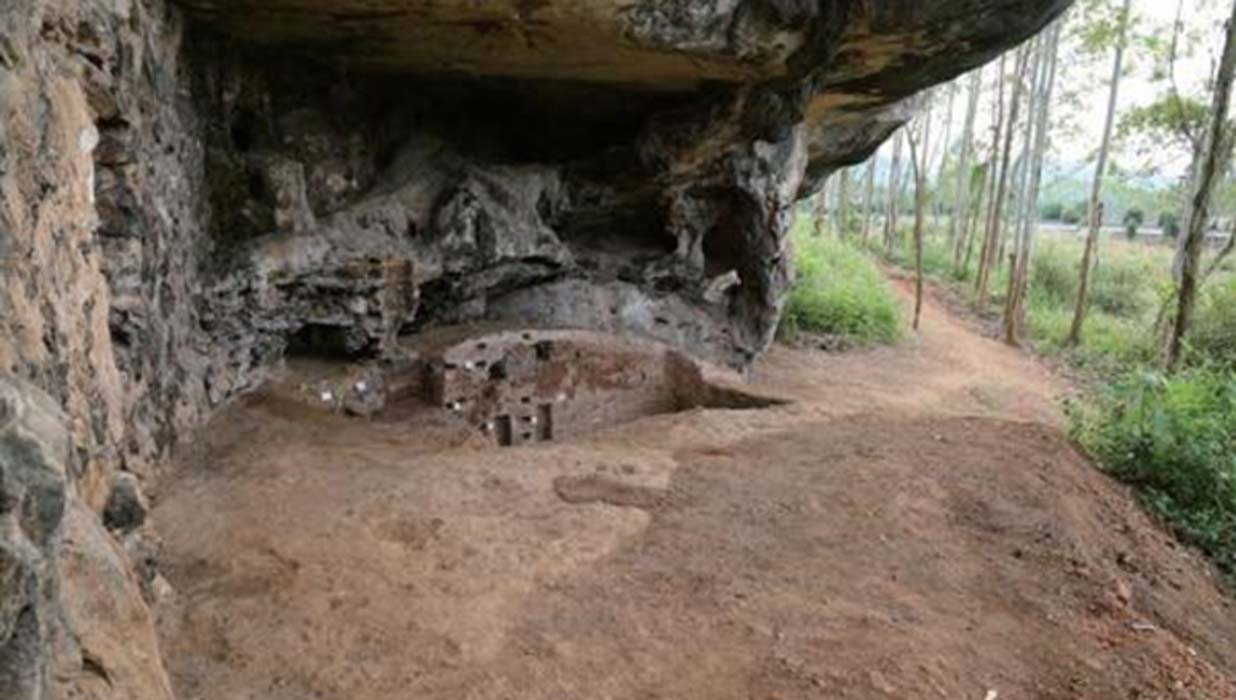Cave With 25,000 Years of Human History Now Delivers Headless Squatting Woman
In China, archaeologists have made an extraordinary discovery from over 13,000 years ago according to the State News Agency. During excavations in a cave, they have unearthed the headless remains of a young woman who was found to be buried in a squatting position. The find and others at the site are helping Chinese experts to understand the development of human society in the Stone Age.
The Area of the Squatting Burial
The discovery was made in a cave in the Qingtang ruins in Yingde City, Guangdong Province, which is in the south-east of China. For two years (2016-2018) archaeologists and other researchers from the Guangdong Institute of Cultural Relics and Archaeology and the College of Archaeology and Museology at Peking University have been working at the location, reports Newsweek. They have investigated a site that is 150 feet (54 meters) in extent in the cave.
The cave and others nearby have revealed a “continuous strata from the Upper Pleistocene to the Lower Holocene” reports the cssn.cn website. The area has yielded a range of artifacts including stone tools, pottery shards, shells, animal bones, ivory, and some evidence of fire hearths.

The remains of a hearth found at the site. (Image: CSSN)
The researchers have found literally thousands of artifacts. The caves were apparently inhabited by humans on an irregular basis from 25,000 to 10,000 years ago. It appears that human habitation of the caves was related to ancient climatic and environmental conditions.
The Discovery of the Squatting Burial of the Headless Skeleton
In the floor of one cave, they made perhaps the most important discovery yet. Archaeologists found a partial human skeleton, that was almost complete - but it was headless. This human skeleton is the oldest ever found in this part of the People’s Republic of China. The remarkable find was made in 2018, but Western media outlets were only informed of it in April 2019.
- Spectacular Royal Han Tombs Reveal Wealth and Glory of China’s Golden Age
- Insights into Imperialism as China's Most Ancient Imperial Palace is Discovered in Shanxi
- Stone Hatchet Man & The Troubling Unfinished Journeys to the Spirit World for Native American Bones

Squatting woman (Image: CSSN)
The skeleton was squatting with her knees pulled close to her body. One of the team, who made the discovery, Liu Suoqiang, was quoted as saying by Archaeology.org that “the woman was deliberately put in a squatting posture.” Radiocarbon dating and other methods were used to date the find and the skeleton is approximately 13,500 years old.
This type of burial, where the deceased is placed in a squatting position, is one that was common in South-East Asia in the late Pleistocene and the Holocene era, but this is the first burial of its type found in southern China. This may indicate that South China and South-East Asia was once part of a common cultural zone, with related peoples.
Is the Squatting Burial Evidence of Stone Age Religion and Culture?
Despite the prevalence of this funerary practice, no one is sure why the deceased was placed in a crouching position in her grave. According to Newsweek “some archaeologists believe her unusual resting position may symbolize pregnancy.” This may indicate that the woman was pregnant when she died but there is no hard evidence for this conclusion.
What can be inferred from the find is that those who buried the headless woman, were part of a society that was capable of symbolic thought. The ‘squatting burial’ was possibly related to some cultural and spiritual beliefs. Some evidence for this theory comes in the form of burial goods such as a pin, which may demonstrate a belief in an afterlife. The grave would seem to indicate that our ancestors had developed some type of religious system. This unusual burial allows us to better understand the emergence of social organizations and religion in the Palaeolithic.
Why Was the Skeleton of Squatting Burial Headless?
However, the absence of a head is something that is perplexing the team. Newsweek quotes Liu as saying that it is not certain “whether the young woman was decapitated while alive, or if her head was removed after death but before burial.” It is possible that she was decapitated as part of a funerary ritual before her burial, or if she had met a violent end, perhaps she was beheaded during a conflict between two groups.
The discovery of the headless young woman in a squatting position is one that could transform our understanding of the prehistory of East and South-East Asia. It is providing evidence of cultural exchange between China and South-East Asia some 13,500 years ago. This may also offer new clues as to the peopling of the region. The headless young woman’s form of burial also provides some evidence for religious beliefs and elaborate funerary rites in the Upper Pleistocene in southern China.
Top image: Huangmenyan cave, site of the squatting burial found in China. Source: CSSN
By Ed Whelan



















